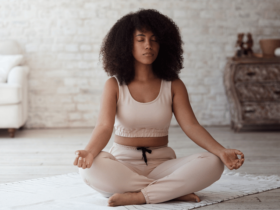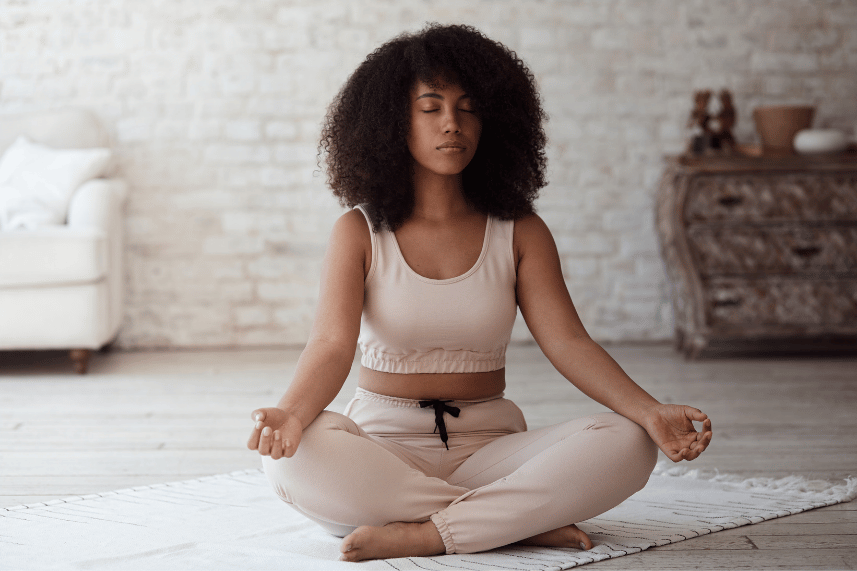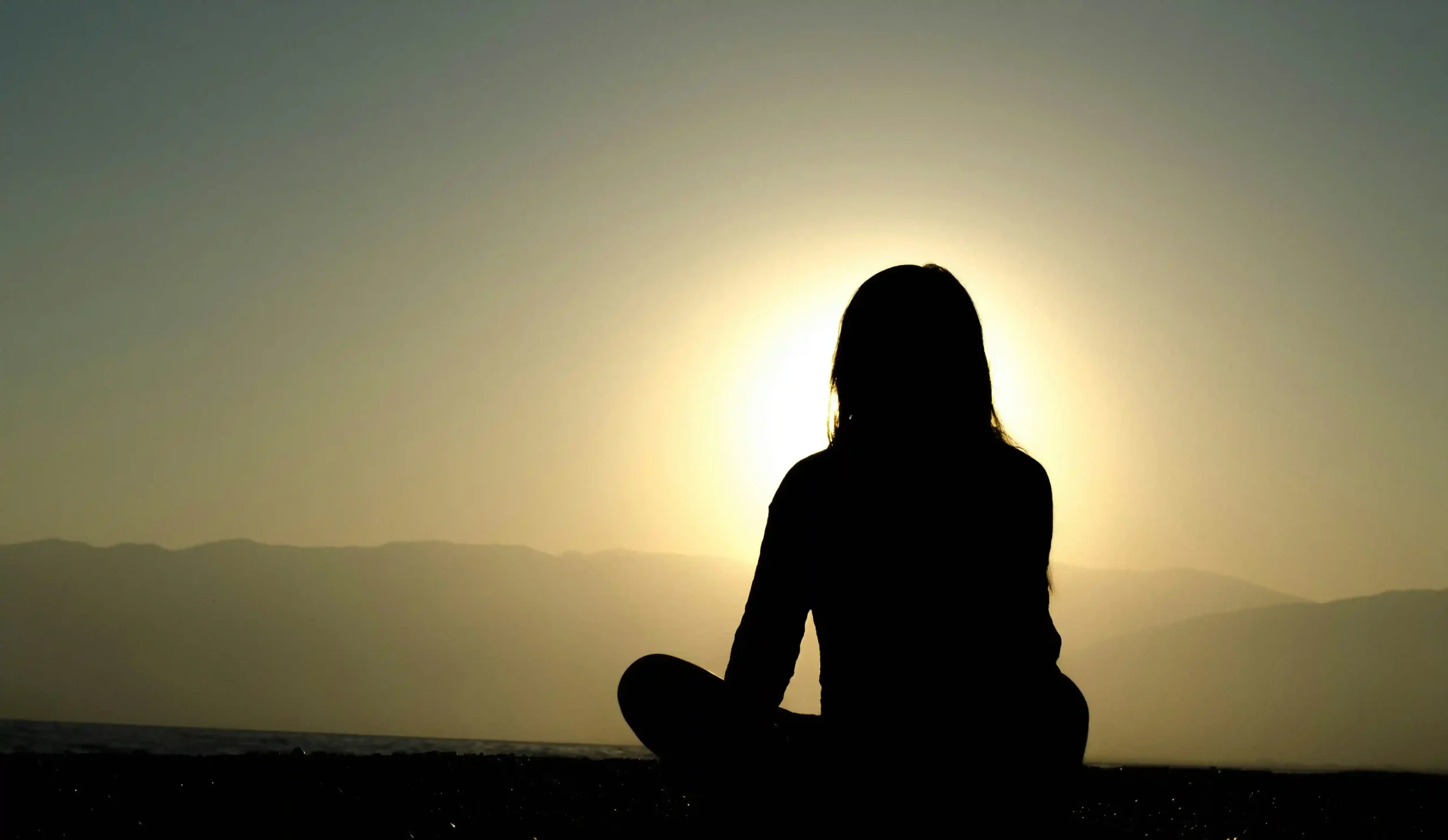Meditation is a powerful tool for reducing stress, enhancing focus, and promoting overall well-being. If you’re new to meditation or looking to deepen your practice, here are some techniques to explore. Each method offers unique benefits, so find what resonates best with you.
Inner peace is found in meditation, where silence meets self-discovery.
1. Mindfulness Meditation
Mindfulness meditation is about being present and fully engaging with the current moment.
How to Practice:
- Find a quiet, comfortable place to sit.
- Close your eyes and focus on your breath.
- Notice the sensation of your breath entering and leaving your body.
- When your mind wanders, gently bring your focus back to your breath.
Benefits:
- Enhances awareness and concentration
- Reduces stress and anxiety
- Promotes emotional health
2. Guided Meditation
In guided meditation, a narrator leads you through the meditation process.
How to Practice:
- Choose a guided meditation recording or app (like Headspace or Calm).
- Find a comfortable position and close your eyes.
- Follow the narrator’s instructions, which may include visualization, deep breathing, or body scanning.
Benefits:
- Ideal for beginners
- Provides structure and guidance
- Can be tailored to specific needs (e.g., relaxation, sleep, focus)
3. Transcendental Meditation
Transcendental Meditation (TM) uses a mantra—a word or sound repeated silently.
How to Practice:
- Sit comfortably with your eyes closed.
- Silently repeat a chosen mantra.
- If your mind wanders, gently return to the mantra.
Benefits:
- Promotes deep relaxation
- Reduces stress and anxiety
- Enhances creativity and clarity
4. Loving-Kindness Meditation (Metta)
This technique focuses on developing feelings of compassion and love.
How to Practice:
- Sit comfortably and close your eyes.
- Repeat phrases like “May I be happy, may I be healthy.”
- Gradually extend these wishes to others, including friends, family, and even people you find challenging.
Benefits:
- Increases empathy and compassion
- Enhances emotional resilience
- Reduces self-criticism and promotes self-acceptance
5. Body Scan Meditation
Body scan meditation involves paying attention to different parts of your body.
How to Practice:
- Lie down or sit comfortably and close your eyes.
- Start at your toes and slowly move your focus up through your body.
- Notice any sensations or tension without judgment.
Benefits:
Promotes relaxation
Enhances body awareness
Reduces physical tension and pain
6. Breath Awareness Meditation
This simple technique focuses on breathing to calm the mind.
How to Practice:
- Sit or lie down comfortably.
- Close your eyes and take deep breaths.
- Focus on the rhythm of your breathing, the rise and fall of your chest, and the air entering and leaving your nostrils.
Benefits:
- Reduces stress and anxiety
- Improves focus and concentration
- Promotes emotional stability
Putting It All Together
Meditation is a highly personal practice, and there’s no one-size-fits-all approach. Experiment with different techniques to find what works best for you. Whether you’re seeking relaxation, focus, or emotional well-being, there’s a meditation style that can help you achieve your goals.
Meditation Techniques Chart For Beginners
| Day | Duration | Meditation Technique | Instructions |
| Day 1 | 5 minutes | Mindfulness Meditation | Find a quiet spot, focus on your breath, and gently bring your mind back when it wanders. |
| Day 2 | 5 minutes | Guided Meditation | Use an app like Headspace or Calm and follow the guided instructions. |
| Day 3 | 5 minutes | Breath Awareness Meditation | Focus on the rhythm of your breathing, noticing the sensation of air entering and leaving your body. |
| Day 4 | 7 minutes | Body Scan Meditation | Lie down, focus on each part of your body starting from your toes to your head, and observe any sensations. |
| Day 5 | 7 minutes | Loving-Kindness Meditation (Metta) | Sit comfortably, repeat phrases of well-wishes for yourself and others, gradually extending to all beings. |
| Day 6 | 10 minutes | Mindfulness Meditation | Focus on your breath and stay present, bringing your attention back whenever your mind wanders. |
| Day 7 | 10 minutes | Guided Meditation | Choose a different guided meditation session tailored to relaxation, sleep, or focus. |
| Day 8 | 10 minutes | Transcendental Meditation | Sit quietly and repeat a chosen mantra silently, bringing your mind back to the mantra when it wanders. |
| Day 9 | 10 minutes | Breath Awareness Meditation | Deepen your practice by paying more attention to the sensations and rhythm of your breathing. |
| Day 10 | 12 minutes | Body Scan Meditation | Extend the duration of your body scan, focusing on any areas of tension and releasing them. |
| Day 11 | 12 minutes | Loving-Kindness Meditation (Metta) | Spend more time extending feelings of compassion to a wider circle of people and beings. |
| Day 12 | 15 minutes | Mindfulness Meditation | Increase the duration, maintaining focus on your breath and gently redirecting your thoughts. |
| Day 13 | 15 minutes | Guided Meditation | Explore different themes or focus areas in your guided meditation practice. |
| Day 14 | 15 minutes | Transcendental Meditation | Continue with your mantra meditation, allowing for a deeper state of relaxation and focus. |
Instructions and Tips for Beginners:
- Choose a Comfortable Position: Whether sitting or lying down, ensure you are comfortable but alert.
- Consistent Time: Meditate at the same time each day to build a routine.
- Environment: Find a quiet, calm space where you won’t be disturbed.
- Breath Focus: If your mind wanders, gently bring it back to your breath or the focal point of your meditation.
- Be Patient: Progress takes time. Start with shorter sessions and gradually increase the duration as you become more comfortable.
- Non-Judgment: Meditation is about practice, not perfection. Don’t judge yourself for wandering thoughts; simply return to your focus.
By following this table and gradually increasing the duration and variety of meditation techniques, beginners can develop a consistent and rewarding meditation practice.
FAQs About Meditation
1. What is meditation, and why should I do it?
Answer: Meditation is a practice where you focus your mind on a particular object, thought, or activity to train attention and awareness. It helps reduce stress, improve concentration, and enhance overall well-being. Regular meditation can lead to better emotional health, increased self-awareness, and a greater sense of calm.
2. How long should I meditate as a beginner?
Answer: As a beginner, start with just 5 minutes a day and gradually increase the duration as you become more comfortable with the practice. Aim to build up to 15-20 minutes per session.
3. Do I need any special equipment to meditate?
Answer: No special equipment is needed for meditation. All you need is a quiet space where you can sit comfortably. Some people use cushions, mats, or meditation apps, but these are optional.
4. What is the best time of day to meditate?
Answer: The best time to meditate is whenever it fits into your schedule. Many people find that meditating in the morning sets a positive tone for the day, while others prefer to meditate in the evening to unwind before bed.
5. How do I deal with a wandering mind during meditation?
Answer: It’s natural for your mind to wander during meditation. When you notice this happening, gently bring your focus back to your breath or the object of your meditation. Don’t judge yourself for having thoughts; simply acknowledge them and return to your practice.
6. Can meditation help with anxiety and stress?
Answer: Yes, meditation is an effective tool for managing anxiety and stress. By promoting relaxation and mindfulness, meditation helps reduce the physical and emotional symptoms of stress, leading to a calmer, more balanced state of mind.
7. What are some common meditation techniques?
Answer: Common meditation techniques include mindfulness meditation, guided meditation, transcendental meditation, loving-kindness meditation, body scan meditation, and breath awareness meditation. Each technique has its own focus and benefits.
8. Is it normal to feel uncomfortable or restless during meditation?
Answer: Yes, it’s normal to feel uncomfortable or restless, especially when you’re new to meditation. These feelings usually decrease with regular practice. If discomfort persists, try adjusting your posture or experimenting with different techniques to find what works best for you.
9. Can I meditate lying down?
Answer: Yes, you can meditate lying down, especially if you’re practicing body scan or guided relaxation meditations. However, be mindful that lying down can sometimes lead to falling asleep. If this happens frequently, try meditating in a seated position instead.
10. How soon will I see the benefits of meditation?
Answer: Some people notice immediate benefits such as a sense of calm and relaxation after just one session. However, the more profound benefits, like reduced stress and increased focus, often develop over weeks or months of consistent practice. Patience and regularity are key.
11. How many types of meditation techniques are there?
Answer: There are numerous meditation techniques, but some of the most common ones include:
- Mindfulness Meditation
- Guided Meditation
- Transcendental Meditation
- Loving-Kindness Meditation (Metta)
- Body Scan Meditation
- Breath Awareness Meditation
- Zen Meditation (Zazen)
- Vipassana Meditation
- Chakra Meditation
- Mantra Meditation
Each technique has its own focus and benefits, catering to different needs and preferences.
12. Which meditation technique is best for beginners?
Answer: Mindfulness Meditation and Guided Meditation are often recommended for beginners. Mindfulness Meditation is simple and can be done anywhere, focusing on your breath or present moment. Guided Meditation provides structure and support through audio instructions, making it easier to follow along and stay focused.
13. What is the highest form of meditation?
Answer: The “highest” form of meditation can be subjective and varies based on individual goals and spiritual beliefs. However, in many traditions, practices like Samadhi (a state of deep concentration and meditative absorption) or Dzogchen (a form of Tibetan meditation that focuses on recognizing the natural state of the mind) are considered advanced or highest forms of meditation. These practices require deep dedication and often years of consistent practice to master.
14. Can I switch between different meditation techniques?
Answer: Yes, you can switch between different meditation techniques. In fact, experimenting with various methods can help you find the ones that resonate most with you and suit your needs at different times. Some people may use mindfulness meditation daily and incorporate guided or loving-kindness meditation when they seek specific benefits.
15. How do I know which meditation technique is right for me?
Answer: The best way to find the right meditation technique is to try out several and see which ones you feel most comfortable with and which ones provide the most benefit. Consider your goals (e.g., reducing stress, improving focus, cultivating compassion) and choose techniques that align with those goals. Listening to your intuition and observing how you feel after each session can guide you in selecting the most suitable practice.
16. Do I need a teacher to learn meditation?
Answer: While having a teacher or guide can be very beneficial, especially for advanced practices, it’s not strictly necessary for beginners. There are many resources available, including books, apps, online courses, and videos, that can help you start your meditation practice. As you progress, you might find it helpful to seek guidance from an experienced teacher to deepen your practice.
17. How often should I meditate to see results?
Answer: Consistency is key in meditation. Starting with just 5-10 minutes a day can yield noticeable benefits over time. As you become more comfortable, aim to meditate for 15-20 minutes daily. Regular practice, even if it’s short, is more effective than infrequent, longer sessions.
18. Can meditation improve my sleep?
Answer: Yes, meditation can improve sleep by reducing stress and promoting relaxation. Techniques like guided sleep meditations, body scans, and mindfulness can help calm the mind and prepare the body for restful sleep.
19. What should I do if I feel frustrated or discouraged with my meditation practice?
Answer: It’s normal to feel frustrated or discouraged at times. Meditation is a practice, and progress can be gradual. Be patient with yourself and recognize that every session, even challenging ones, contributes to your overall growth. If needed, take a short break or try a different technique to re-engage your interest.
20. Can children practice meditation?
Answer: Yes, children can practice meditation. Techniques such as guided visualization, mindfulness, and breathing exercises are particularly suitable for kids. Meditation can help children develop focus, emotional regulation, and a sense of calm. There are many child-friendly resources available to help introduce meditation to younger audiences.



















Leave a Reply
View Comments